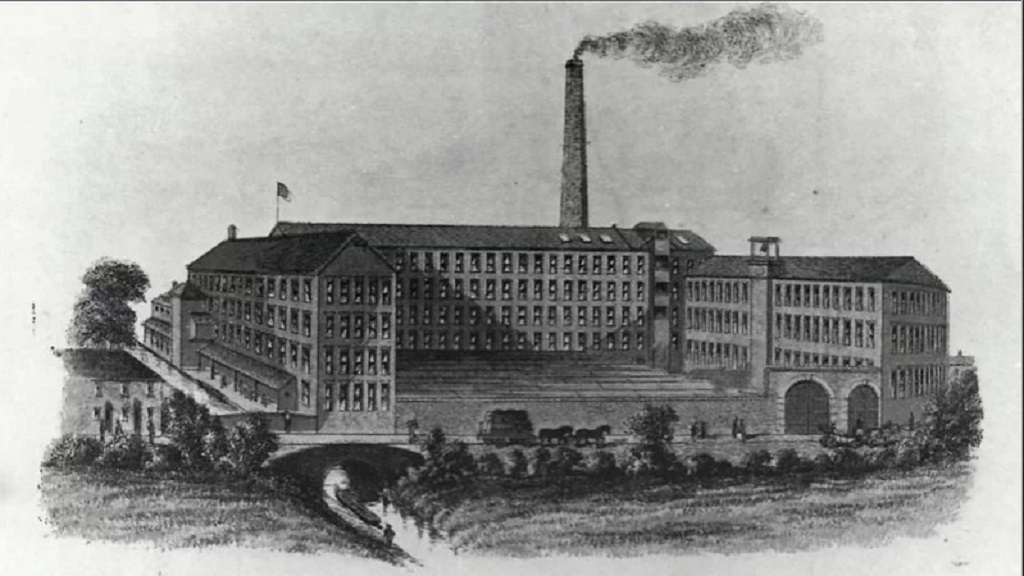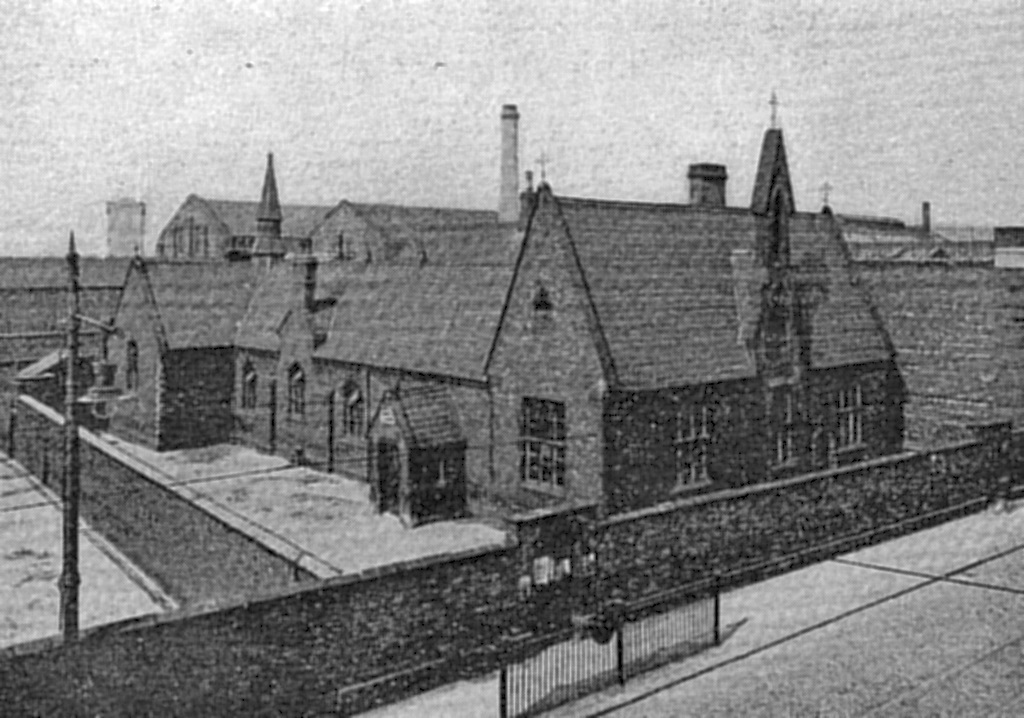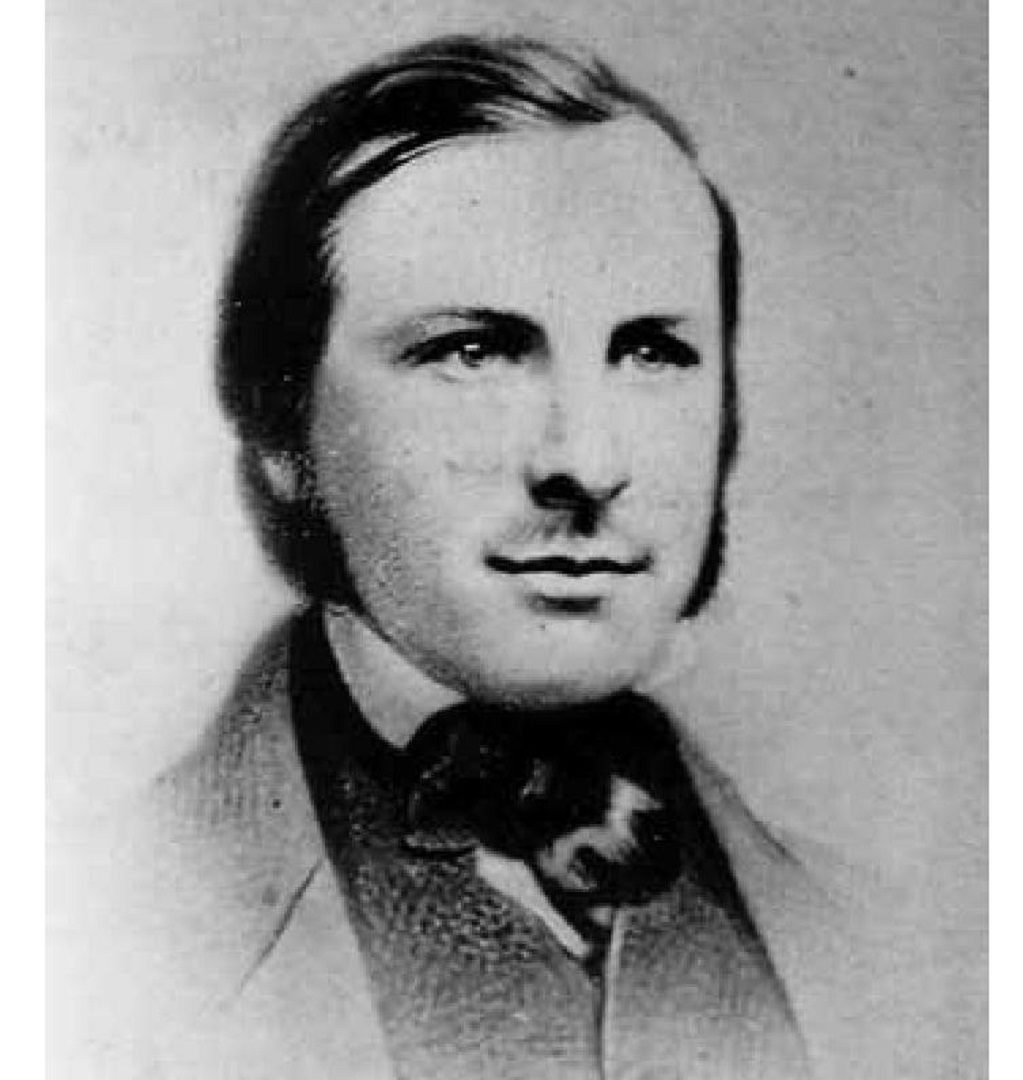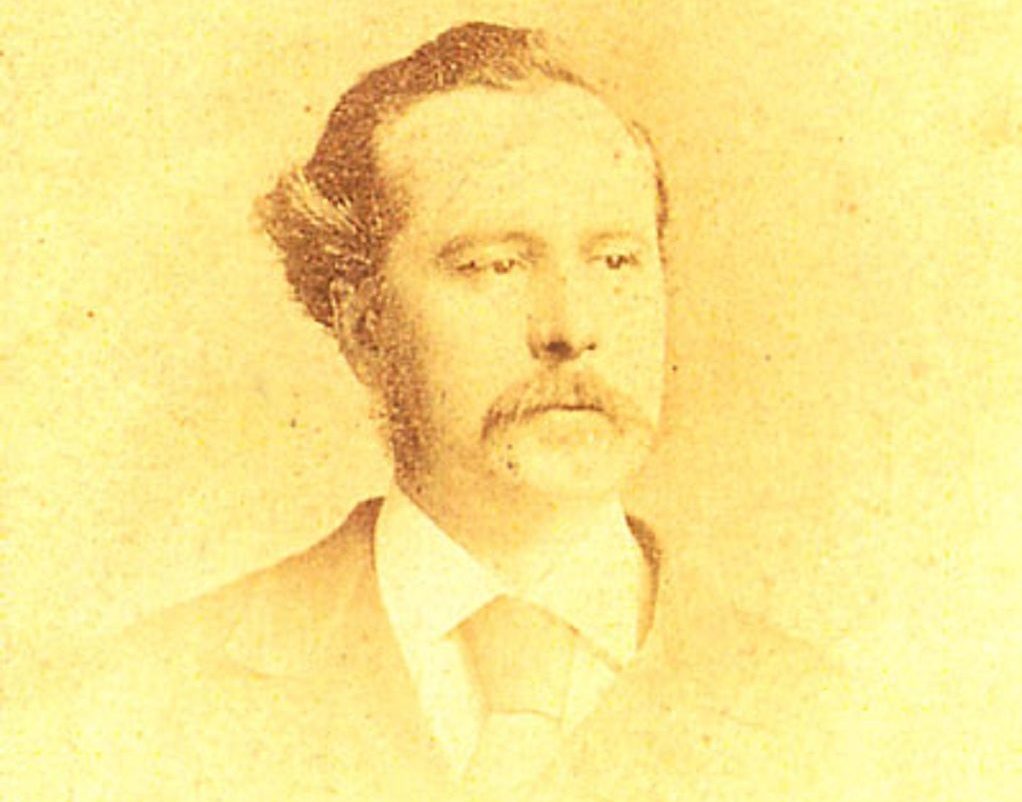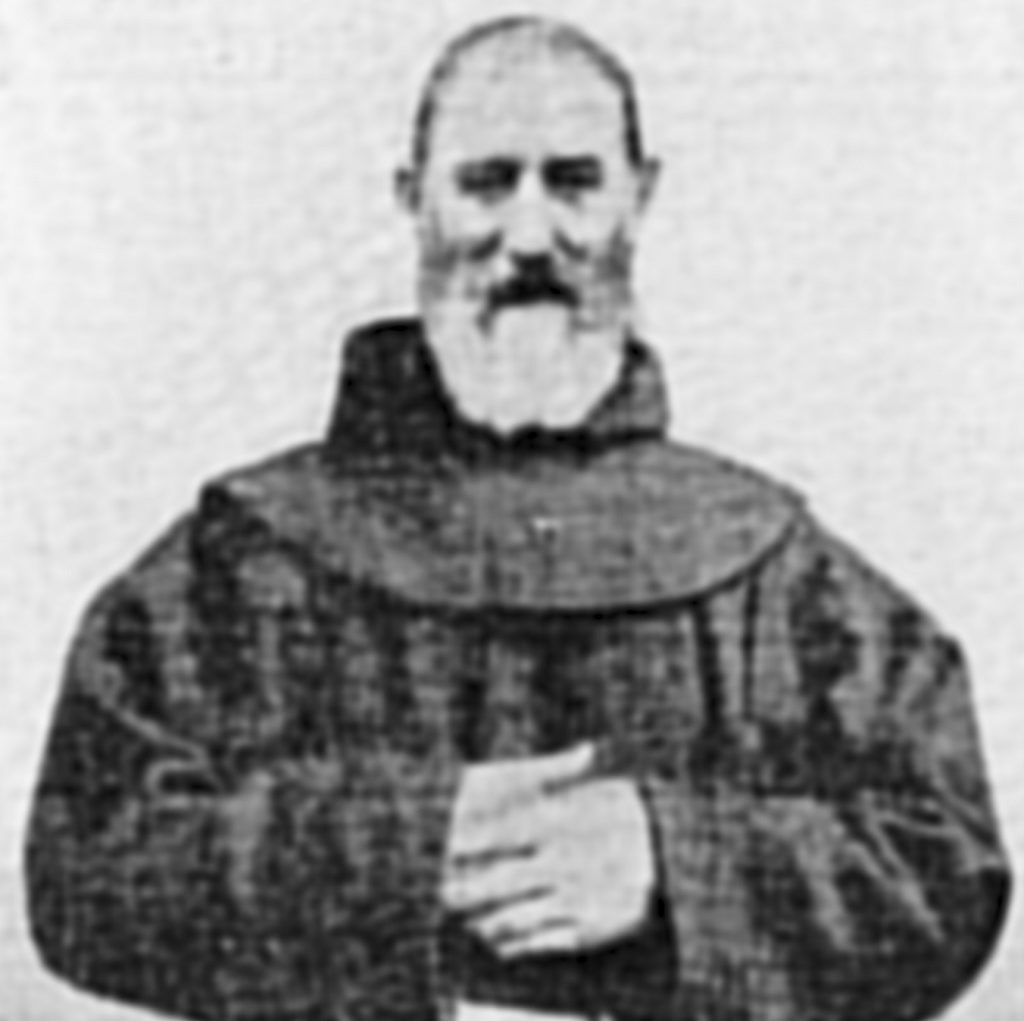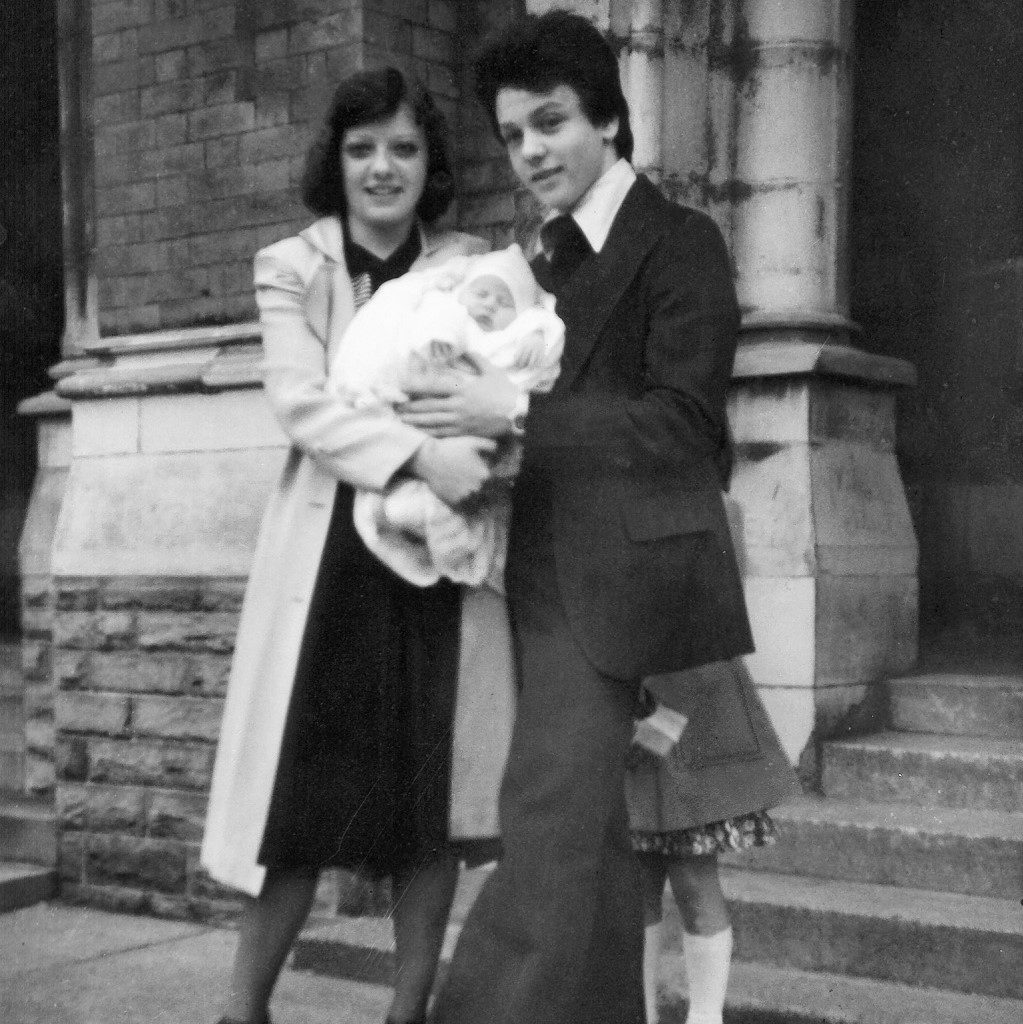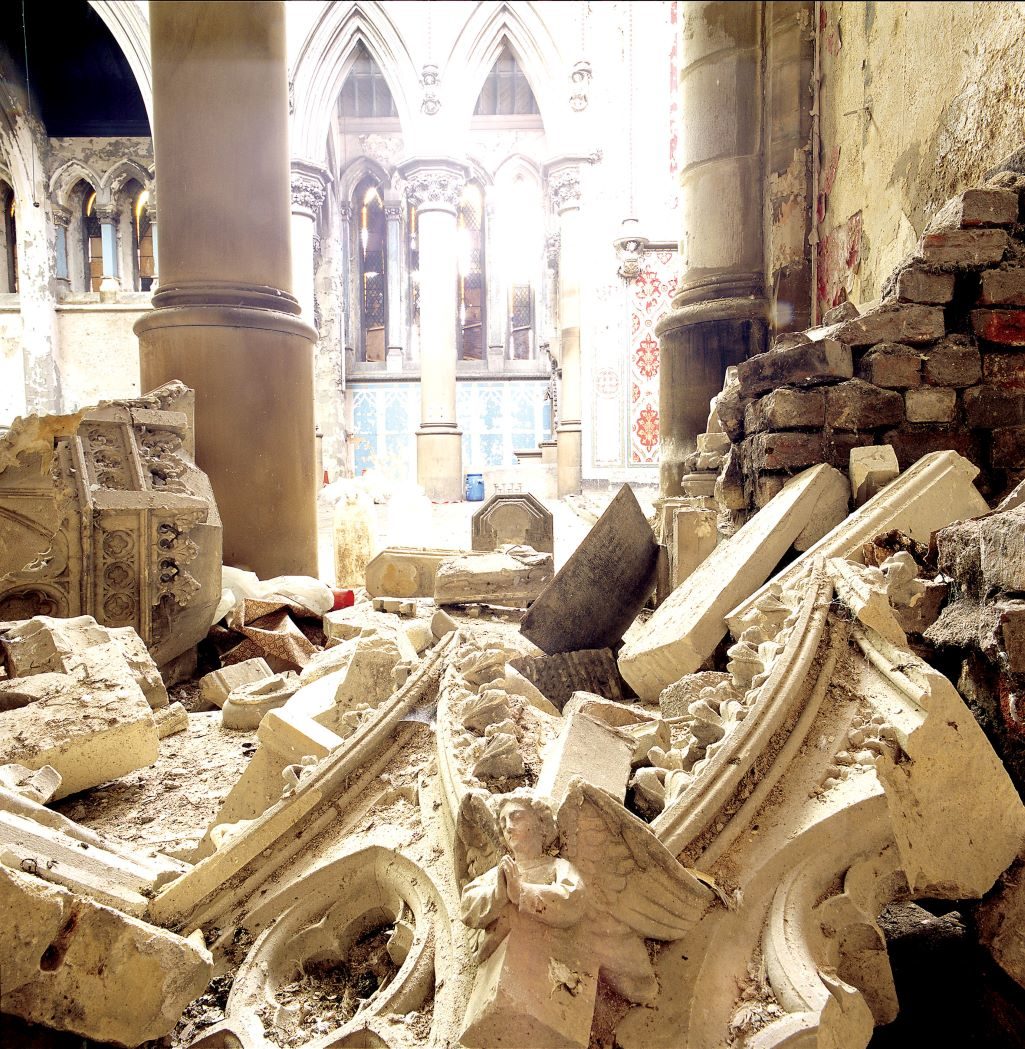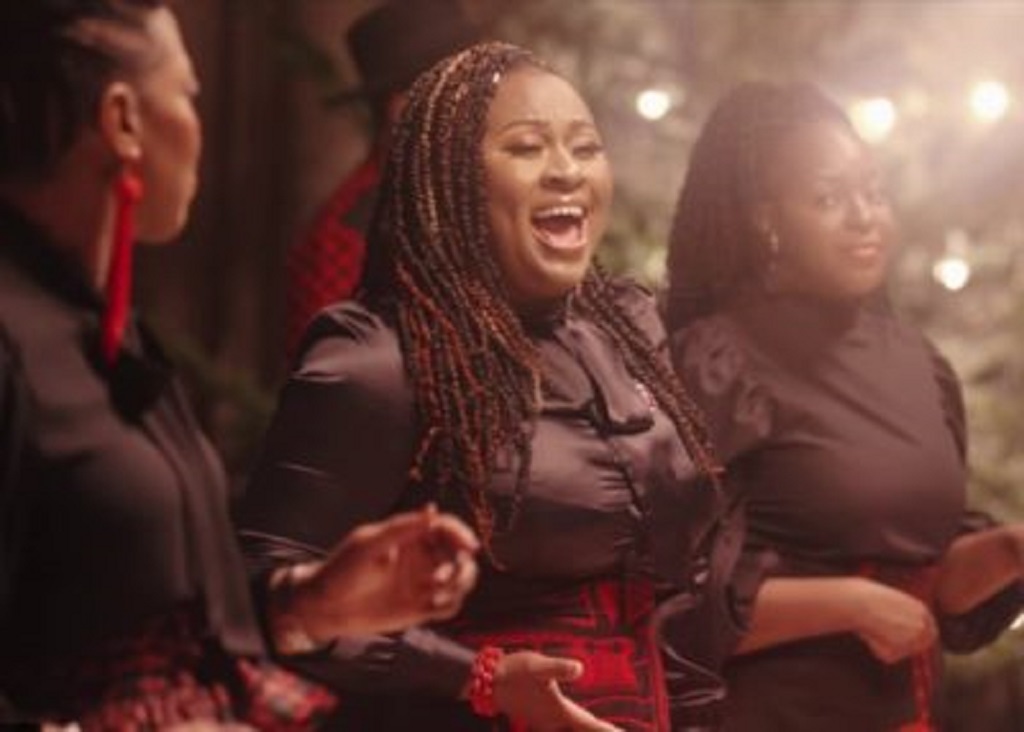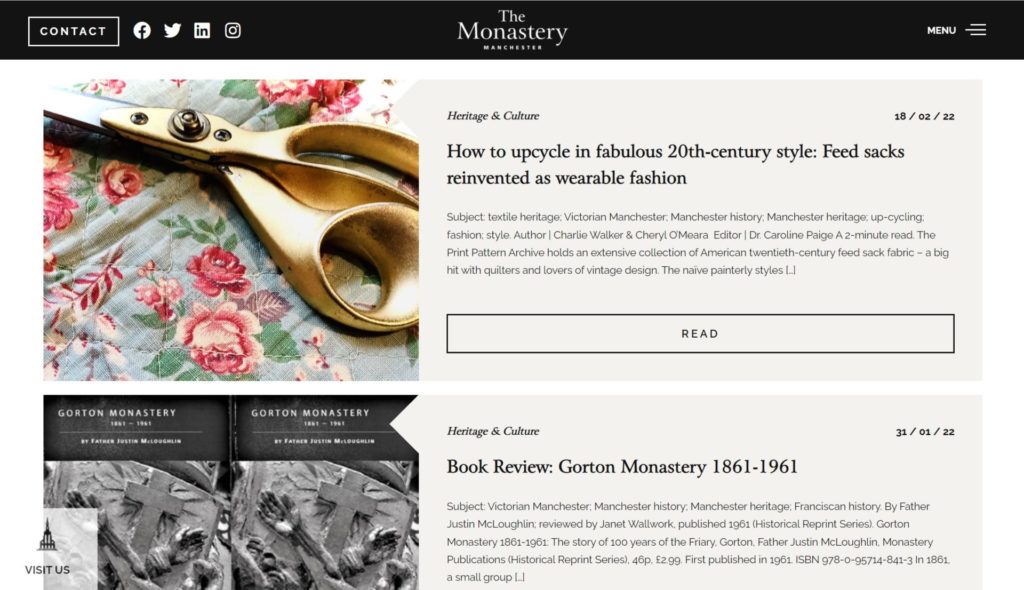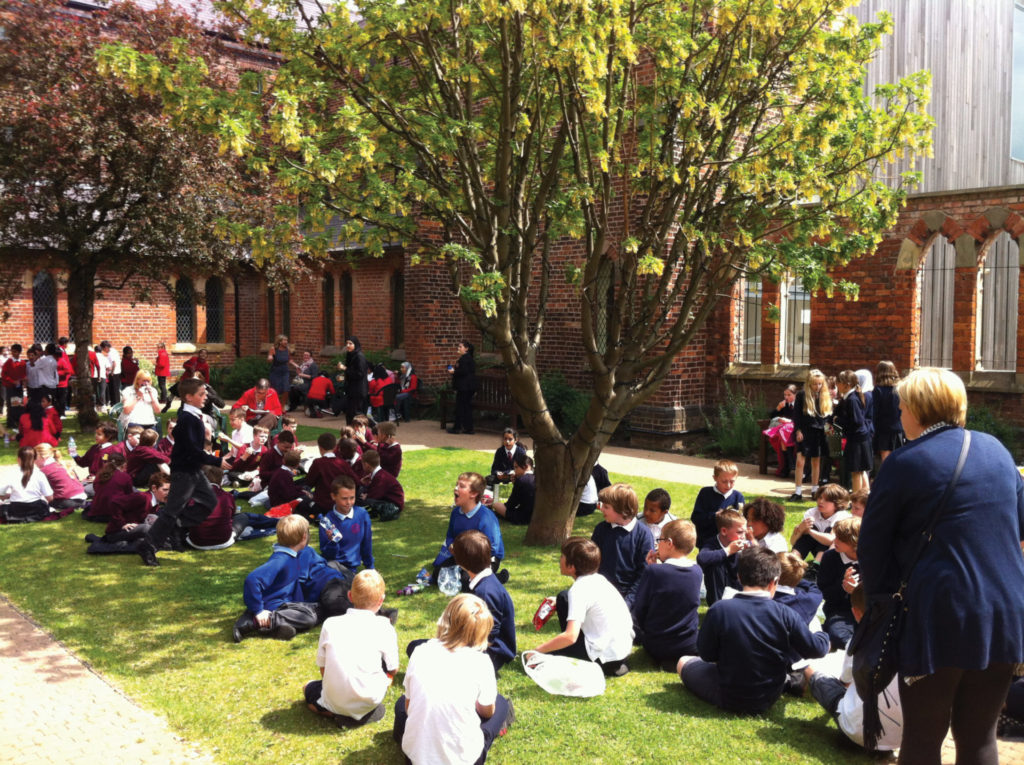A piece of Manchester History
A 10-minute read. Editor’s note: An extended version is available in our Monastery Magazine if you want to follow-up sources.
It’s a story of new communities working together to overcome adversity. It’s a story of the people. Read on to explore the extraordinary story of Manchester Monastery and its part in Manchester history.
A monastery in Victorian Manchester
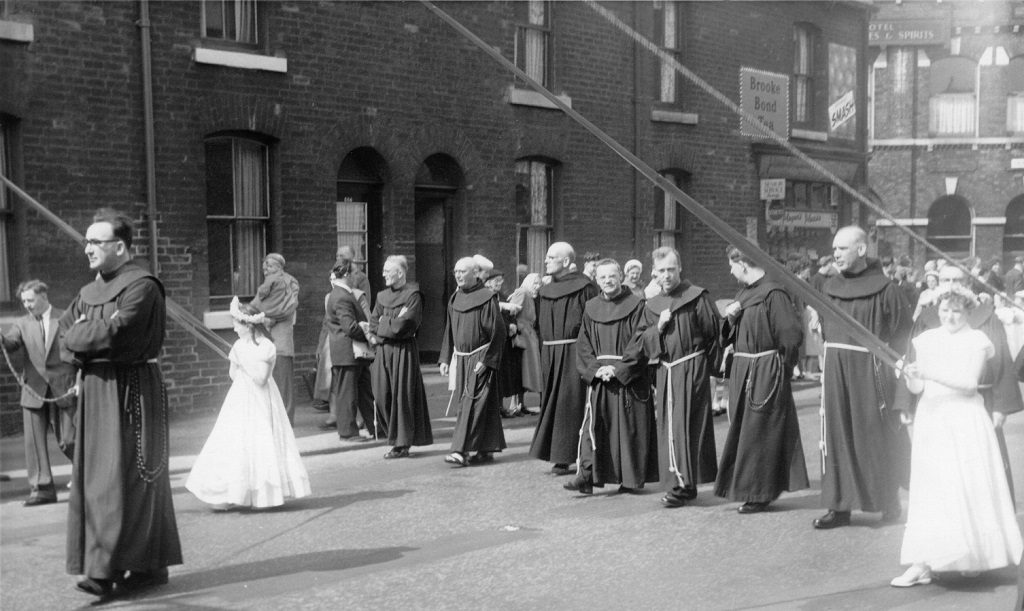
The Monastery started life with a different name, it was The Church and Friary of St Francis, West Gorton. Locals called it the monastery. The Franciscan friars, dressed in their habits, would have looked like monks to the people of Victorian Manchester.
To understand why Roman Catholic Franciscan Friars built here we need to look at attitudes to religion in Victorian Britain.
Changing attitudes in Victorian Britain
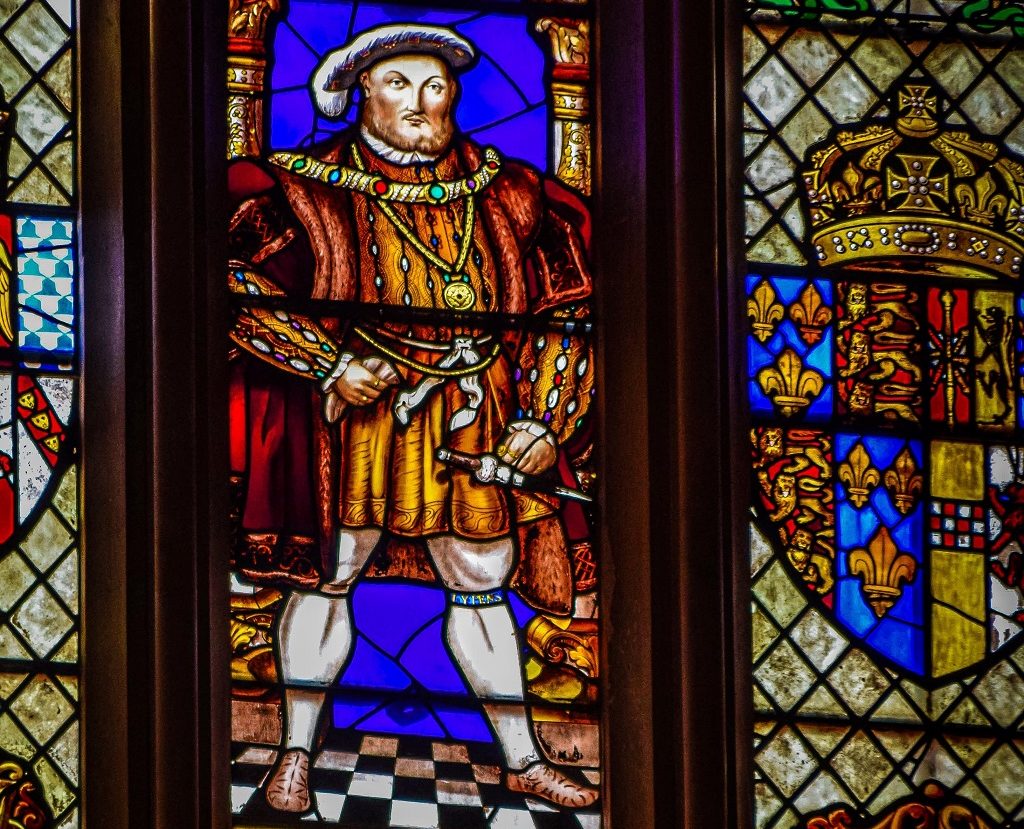
Catholicism had been illegal in England, Wales, Scotland, and Ireland since the 16th century. In 1534, Henry VIII broke away from the all-powerful Catholic Church and declared himself Supreme Head of the Church in England.
Before this, the Pope, as head of the Church, claimed spiritual and political power over its followers. Anti-Catholicism in 16th-century England centred on fear the Pope wanted to take control of England in allegiance with England’s enemies – Spain or France.
Henry VIII’s radical Reformation of English religion began because the Pope refused to annul Henry’s marriage to Katherine of Aragon, daughter of the Spanish rulers Ferdinand II of Aragon and Isabella I of Castile. You may have heard of Henry’s Dissolution (or Suppression) of the Monasteries. British school curriculums mean that it’s well-known legislation from this period.
By the end of the 18th century, there was greater tolerance and changes to anti-Catholic laws in 1829 decriminalised Catholicism.
In 1850, the Vatican (the home of the Pope and Roman Catholic rule making) responded by creating Catholic dioceses in England. This created a surge in Catholic church building in the newly United Kingdom on a scale not seen since the reign of Henry VIII.
The Catholic Diocese for Manchester was named the Diocese of Salford, to avoid the same name as the Church of England Diocese of Manchester.
A Franciscan College in Douai
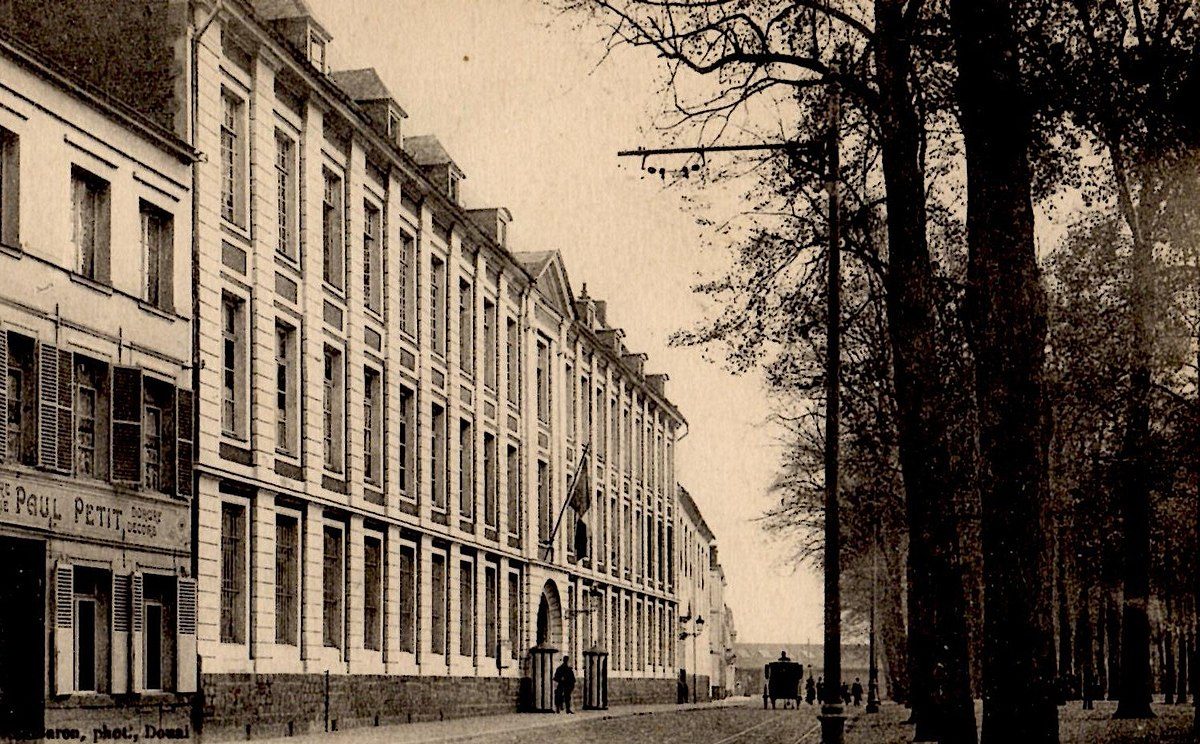
The anti-Catholic laws of the 16th century meant that Englishmen who wanted to train as Franciscan friars attended the Franciscan College in Douai (now Northern France). From the 17th century, Douai was the centre of English Catholicism.
That ended at the close of the 18th century when the French Revolution suppressed (not allowed to practice) religious orders and abolished feudal laws that gave the Catholic Church political and economic power.
Franciscan friars in Victorian Manchester
In the early 1800s, there were still a few elderly Franciscans alive in England who had trained at the college in Douai. These retired friars lived at the Franciscan Convent in Taunton. They hoped increased tolerance of Catholicism would allow a Franciscan Order to be established again in the British Isles.
They asked friars from the Belgian Province that neighboured Douai to help to bolster the expanding English provinces – an English Mission which the Belgian Recollect Friars began in London in the 1850s.
In November 1861, three Belgian friars arrived by train in Victorian Manchester. Invited by the Bishop of Salford, they came to look after the Catholic parish of Fairfield and to create the new Catholic parish of Gorton.
New communities in Victorian Manchester
Victorian Manchester saw new Catholic Irish communities arrive and a growing demand for Catholic churches.
Failed harvests brought famine to Ireland. Many families fled resulting in large-scale migration to England and Scotland. The cities of Glasgow, Manchester, Liverpool, and London saw the largest migration of Irish communities.
Manchester transformed from an 18th century market town to a commercial and manufacturing centre of the north. Its population rocketed from 10,000 in 1717 to over 300,000 by 1851.
The city spilled outwards consuming satellite districts and villages and repurposing them for new urban development. Vast brick factories and mill buildings dominated the landscape of the city – broken only by areas with street after street of uniform rows of houses surrounding the soot blackened spires of parish churches.
In the ten years leading to 1861, the population of Gorton doubled to 10,000. Gorton now housed large Irish Catholic communities in its new urban housing. These men and women provided much needed labour for the rapidly industrialising city.
Gorton Mills, 1840
Why the friars chose Victorian Manchester
At first, the friars stayed with Father Peter Cardinal in Fairfield, just down the road from Gorton. They started their work there as the Catholic Mission in Gorton on 1 December 1861. It was an important day in the Christian calendar, the first Sunday of Advent.
Father Peter invited the friars to the parish because there were 400 Catholic parishioners and no priest to serve them.
He had recently built a chapel that was also used as a school on Gorton Lane (then called Gorton Old Road). Built in a cruciform (cross) shape, it stood at the far end of what is now the car park.
On Christmas Day 1861, the friars held their first Mass for the Catholic people of Gorton at the chapel school.
The first chapel and school.
Financing the church and friary
Franciscan values, dedicated to working for the poor, meant that Gorton was exactly the right place to build their church and friary. But how could they afford it?
The retired English friars – who trained at Douai and invited the Belgian friars to England – gave the first friars at Gorton £2,000 towards their Mission here. Our friars also received £500 from a benefactor called Thomas Luck.
Next to the school chapel there was a plot of four acres that contained a large house called Bankfield Cottage. The friars bought the site for £2,200 and on 25 April 1862 they moved into Bankfield Cottage, their new home in Gorton.
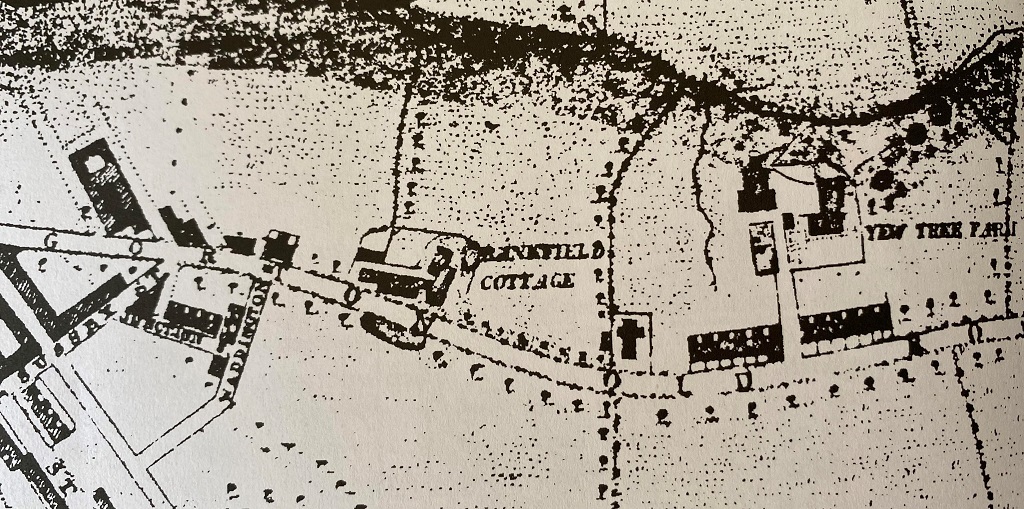
Fundraising continued with regular collections from the local population and bazaars held in the city to promote the cause to wealthy donors.
Building work was slow and often non-existent until Father Willibrord van den Neucker became Guardian in 1871. He was the driving force behind the successful completion of the church. His large-scale fundraising in the city was very profitable and he also secured £4,000 of the old Franciscan funds.
Victorian architecture and the Catholic Church
Victorian architecture was influenced by popular architects like Augustus Welby Pugin, who designed many Catholic churches and wrote about the principles of architecture. A devout Roman Catholic and a fanatic for Gothic he was an authority on medieval Christian architecture (medieval churches predate the Reformation, so were Catholic before relabelling as Church of England).
Pugin became Roman Catholic in 1835, after the removal of anti-Catholic laws. He was writing and designing during the Catholic revival in the UK.
His writing famously claimed the Reformation had caused a decline in arts in the UK. Many contemporary architects and artists criticised these claims, but they made him popular with Catholics. He was also a brilliant architect and designer and a key influence in the architecture of Victorian Britain.
Pugin is most well-known for the elaborate Gothic detail he designed for the new Houses of Parliament, while he worked for the architect Charles Barry. His skill for design and knowledge of medieval Christian architecture made him the leading architect of the Victorian Gothic Revival.
After Augustus died in 1852, Edward Welby Pugin continued his father’s legacy and the Pugin family firm remained a popular choice for Catholic church builders. Despite a limited budget, the Franciscan’s chose this leading firm of Catholic church builders to design their church and friary in Gorton.
Brother Patrick ‘the joint architect’
The three Belgian friars, who arrived in Victorian Manchester, were with one Irishman, Brother Patrick Dalton.
“That” said our guide, pointing to one of the labourers who was pushing a stone into place, “is one of the [friars] …he has saved us more than a thousand pounds. He is a good brick setter, a capital stone cutter, and he takes the place of a Clerk of the Works. You see, he cannot work in his habit so he puts on a workman’s clothes.” And there he was working like the rest of them, with his moleskin trousers, white blouse, and a flat cap over his tonsure…”But this is unusual, is it not?” we observed. “Oh no, not in history. It was thus that all our great abbeys were built, and we have found it a great advantage to revive the custom on a small scale.”
Brother Patrick described by a friar in 1867.
Brother Patrick was a lay member of the Franciscan Order, who took vows of poverty, chastity and obedience, but was not an ordained priest. Edward Pugin kept in touch with Brother Patrick by letter and occasional site visits. Edward found that he could trust Brother Patrick’s judgement and later described him as the ‘joint architect’.
He oversaw construction of the church and friary in Gorton and travelled to oversee building of other Franciscan churches built in the 1870s and 80s in London, Ireland and Glasgow.
The Gorton church and friary are impressive because local people created them. They demolished the house on the site, dug trenches for foundations, and laid many thousands of bricks. They also helped by making the bricks, filling timber moulds with local clay and baking them in kilns. Some eagle-eyed visitors have spotted bricks with the maker’s fingerprints on!
Miss Jackson, who was a pupil at the St Francis infant school in 1892 and later became the headteacher, remembered Brother Patrick and the stories of his work to build the church:
“He did his stint of begging too and was a well-known figure in the local pubs with his collection box and his cry of “Let’s buy another brick for St Francis.” He had his own way of recruiting volunteer labour: he met the men as they left work at midday on Saturday and asked for their help in the afternoon.”
We imagine that Brother Patrick, a lay friar who laboured alongside fellow Irishmen, was quite a character in Gorton.
The local population gave their time and labour generously, but money and materials were often scarce. Brother Patrick scoured Manchester for reclaimed materials to help their cash-strapped project.
Building Manchester landmarks
Construction started with the friary buildings around the cloisters. But the friars couldn’t move into the first buildings completed in 1863. The number of people wanting to attend a Catholic church in Gorton was too big for the original chapel school, so the friars had to use the friary as another chapel.
They completed the second wing (next to Gorton Lane) in 1865 and finally moved into their new friary. The friars had pushed on with their Mission and during this construction work (1862-1865) Father Willibrord and Father Germain converted over 450 people to the Catholic faith.
Next, they demolished Bankfield Cottage to make way for the church. Evidence of the pond at Bankfield Cottage exists in the church basement and it would have provided spring water for the friary kitchens. The Bishop of Salford laid the first stone for the Church of St Francis on 9 June 1866.
Laying out the site
Medieval churches were traditionally laid-out with a rough east-west orientation. This meant the congregation faced the east to pray. This became less common after the medieval period.
Unlike their medieval counterparts, nineteenth-century church and cathedral builders had to work around established road networks. Large urban churches were increasingly built with a grand entrance fronting on to the main road and the High Altar located at the opposite end of the building. The Church of St Francis, built in line with Gorton Lane, has a south entrance.
This is also found at other large contemporary Catholic churches in Manchester. The grand entrance of the Church of the Holy Name is on Oxford Road and the Catholic Cathedral in Salford has a similar arrangement resulting in a south entrance.
This orientation could provide large churches with a much bigger entrance, allowing their congregations to enter and leave quickly. It also provided those entering the church with a clear, undisturbed view of the High Altar. An increasingly popular design for Catholic liturgy in the 1860s and one favoured by Edward Pugin.
A Victorian masterpiece
Originally, visitors to the church walked in from Gorton Lane – straight up the porch steps, into the shade of the brick-vaulted portico and past the enormous oak doors into the Great Nave.
Once in the nave, they had an uninterrupted view of the whole church. The arcade arches lead the visitor’s eye along the Franciscan saints, who watch over the nave, towards the stained-glass windows that pour light on the High Altar – the focal point of the building.
The church builders aspired to cathedral-like proportions and created a nave 98 feet high (30 metres). The building’s huge scale inspired awe in those who saw it. And still does.
Edward Pugin’s striking façade, with its heavy buttresses and central crucifix, meant the building held its own in a city known for its temples to manufacturing – its vast factories and towering mill chimneys.
Sacred light
Locating the church in a rough north-south orientation created some remarkable architectural qualities at Manchester Monastery.
Sunlight comes through windows positioned high in the nave creating a beautiful ladder-like pattern along the floor and towards the High Altar. These windows also light up the twelve statues of Franciscan saints placed above the stone columns – giving them a halo of light.
Old photographs show a statue of St Francis in the right-hand aisle of the church. We think that location might have been chosen for the statue because of the sunlight that streams into the church lighting up that part of the wall on 4 October – St Francis’s feast day.
The play of light at Christmas must have been spectacular. The tall, lancet shaped windows above the entrance portico lit the figure of Jesus on the Crucifix (that used to hang from the chancel arch in front of the High Altar).
Community heritage
Manchester Monastery is still fondly remembered for the many stages of life celebrated here and its role in community heritage.
The site became a busy hub for the local Catholic community. It housed several schools, a training college for friars, a parish library, extensive gardens, a parochial hall for community events, a youth club, a choir, and even a famous amateur dramatic society.
For almost a century, the church and friary flourished. But, by the 1960s, fewer people were going to church which meant less money in church collections. The situation worsened when engineering works closed in Gorton causing mass unemployment and the ‘slum’ clearances of regeneration schemes relocated many people out of Gorton. The last Mass was on the 26 November 1989 and the last friars moved out the following year.
The buildings were sold to a developer to convert into luxury apartments and the surrounding land sold for housing. The apartment development never happened and vandals attacked the unprotected site. After years of neglect, roofs fell in and walls began to fail.
Saving a piece of Manchester history
Paul and Elaine Griffiths (Paul was an altar boy here in the sixties) led a team of volunteers from the local community to save the Monastery. They set up a charitable trust in September 1996 to raise money and awareness to restore the site.
The next year, the plight of the Monastery came to the attention of the World Monuments Fund who placed it on the World Monuments Watch List of 100 Most Endangered Sites. It was a global call to action for heritage sites in need of immediate intervention.
This brought Manchester Monastery back into the limelight. Tireless campaigning resulted in Heritage Lottery Funding and European Regional Development Funding to restore the building in 2005 – one of the biggest community-led restoration projects in the UK.
Manchester heritage that is relevant today
Sharing the remarkable story of how the Franciscan friars and the local community in Gorton succeeded in building Manchester Monastery despite widespread poverty can help us to better understand how our societies and communities developed.
Understanding how they achieved what seems impossible, can inspire us to both find strength in community and to seek answers to the problems that our society faces.
In the words of the Dutch historian, Johan Huizinga (1872-1945),
“History gives answers only to those who know how to ask questions”
Manchester history is not over
Manchester history is still being made.
The Monastery represents the lives and experiences of people. People who built, contributed to, and visited it. For generations it educated, fed, cared for, celebrated, and even entertained communities.
Many people feel a shared ownership of the Monastery and the different and changing heritages the building represents. The deconsecrated (no religion) site still celebrates people. We welcome everyone to find community and shared heritage here.
When you visit, you’re part of our history and community. Share your piece of the history of Manchester Monastery by tagging us on Instagram @themonasterymanchester.
Find interesting articles and insider news in the Heritage & Culture section of the Monastery Magazine.
Join our community
Today, the Monastery shines bright again – saved for future generations. We continue to seek sustainable business plans to ensure the lasting preservation of this part of Manchester heritage.
We have a variety of volunteering opportunities. Whether it’s heritage volunteer work, volunteer counselling, or working on a special project, you will help a great cause.
We are a charity and rely entirely on donations.
No matter what the size, every donation helps us to preserve this important part of Manchester history for future generations to enjoy.

